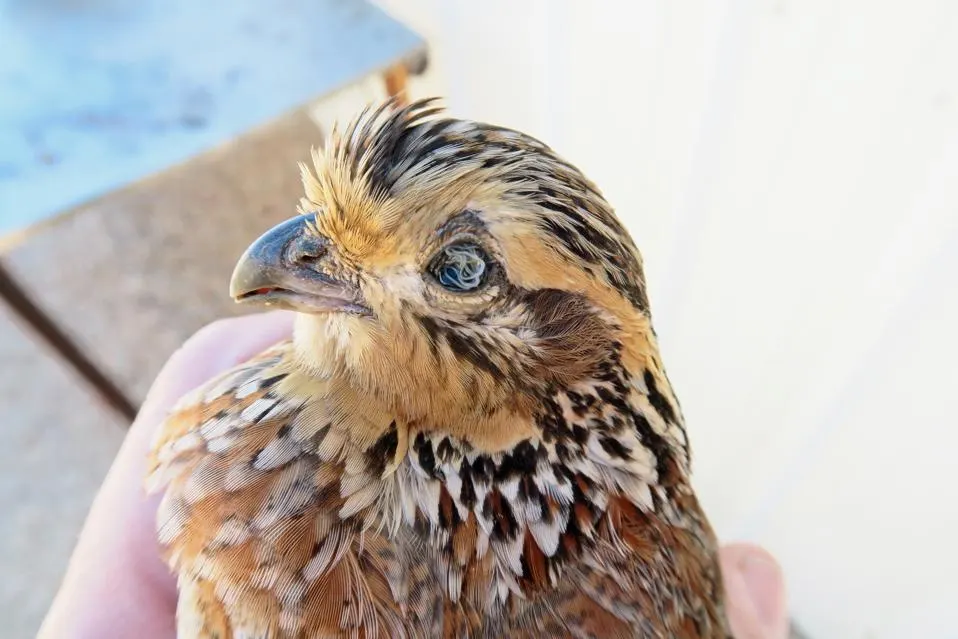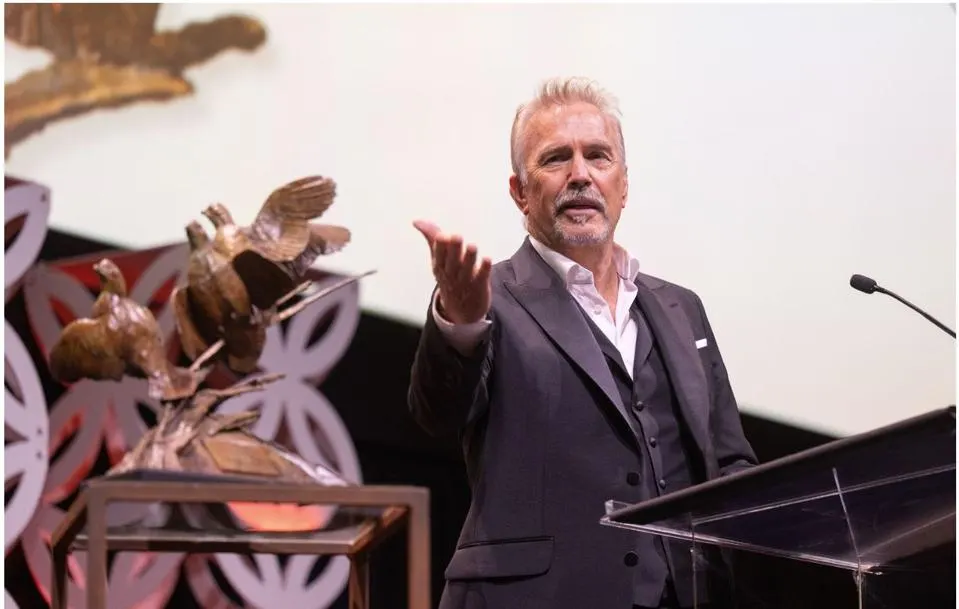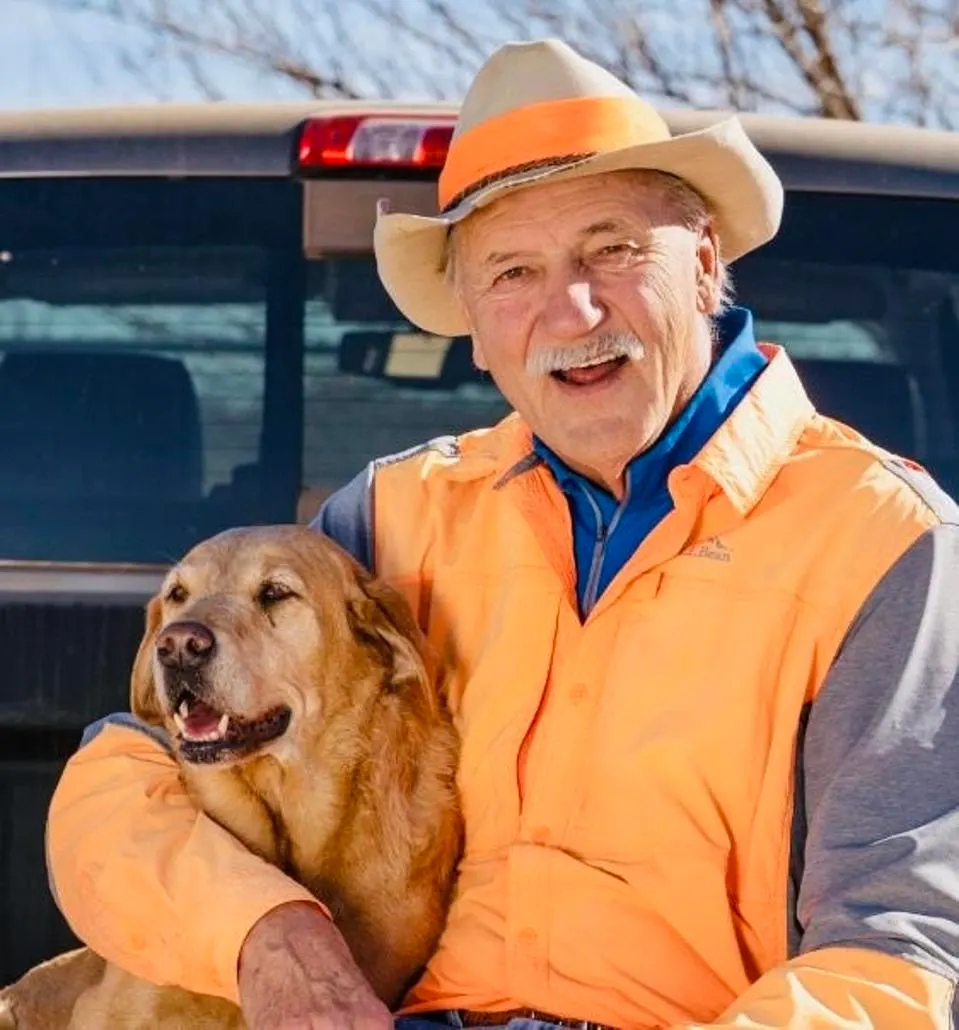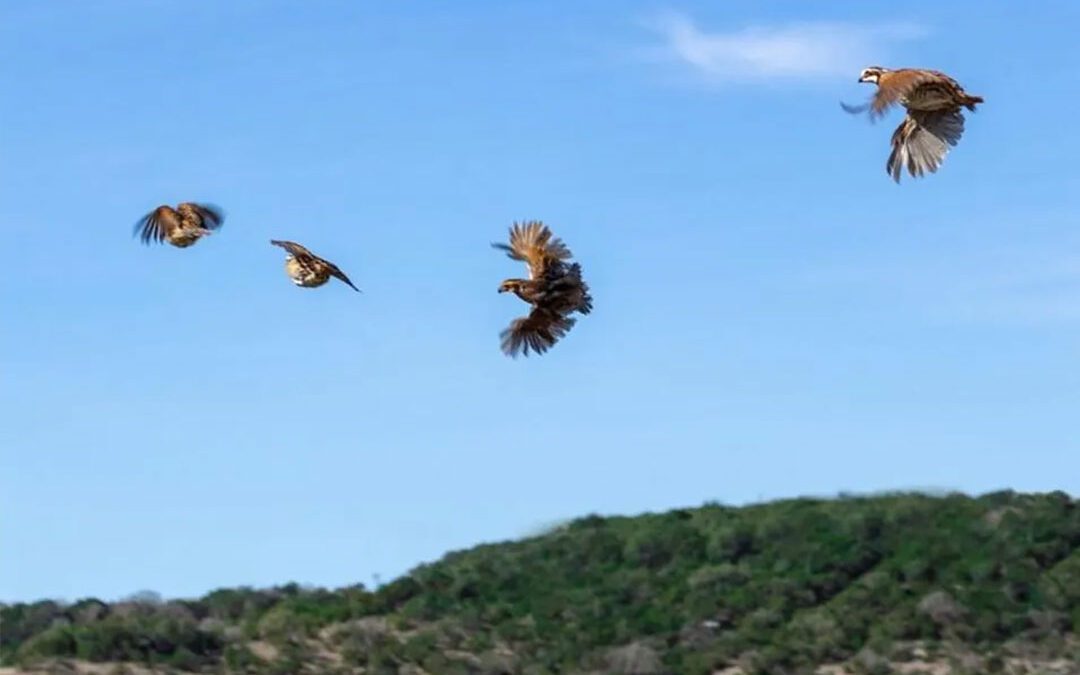For noted quail expert, Dr. Dale Rollins of the Rolling Plains Quail Research Foundation, it was a wakeup call that something in the quail equation had changed. To find out why the birds didn’t respond, Rollins assembled a team of scientists from across Texas and neighboring state universities whose specialties covered the gamut of wildlife maladies. The disappearance of the bobwhite quail was a whodunit and the region’s top wildlife minds were brought in to solve the mystery.
After sampling more than 2,000 quail across 35 counties of West Texas, traditionally a stronghold for wild quail, the researchers discovered a surprisingly high infestation rate of both eye and intestinal parasites in the birds—more than 50 percent had eyeworms and an astounding 90 percent carried caecal worms.

Eye worms were first documented infecting bobwhites in 1959 in Cottle County, Texas.
PARK CITIES QUAIL COALITION
With those alarming findings, a group of quail hunters from the Dallas area who were part of the non-profit Park Cities Quail Coalition (PCQC), funded a $2 million research grant to better understand the problem and to seek solutions. They next brought in Dr. Ron Kendall, a South Carolina native with a lifelong passion for bobwhite quail hunting—so much so that he had moved to West Texas, chasing the last vestiges of some of the nation’s best wild bird hunting.
The notion that parasites might be the cause of the quail declines wasn’t entirely new, for red grouse managers in Scotland had dealt with bird declines of their own, and later discovered that parasites were the culprit. Red grouse are a highly prized and valuable species (driven gamebird shooters from across Europe and America spend big each fall to enjoy what is referred to as the sport of kings). Managers discovered that by spreading inoculated grit on the moors (the tiny stones needed for birds to digest seeds in their diet), the parasites could be significantly controlled.

2-time Academy Award Winner Kevin Costner speaking at the 2023 Park Cities Quail Coalition Fundraiser. PARK CITIES QUAIL COALITION
While researching a book on ruffed grouse in the late 1980s, I discovered that scientists from the University of Wisconsin had similarly identified a parasite (Dispharynx nasuta) that they hypothesized was causing populations of the woodland gamebird to decline. Ruffed grouse are known to experience boom and bust population cycles in many parts of their range and while the parasites seldom killed the birds outright, they so weakened the grouse that they became susceptible to predators like goshawks and great horned owls.
The same can be said for eyeworms and caecal worms in quail. While the parasites rarely kill the birds, they make them far more vulnerable to predation and they are often eaten by swift-flying Cooper’s hawks (which look upon a quail much the same way Paul Prudhomme eyes a redfish), among a slew of other avian and ground predators.

Rick Snipes, a recipient of the prestigious T. Boone Pickens Award, owns a 10-square mile ranch which has been called the “Augusta National” of Quail Hunting. PARK CITIES QUAIL COALITION
In 2012, ranch owner and devout quail aficionado Rick Snipes, who then headed up the Rolling Plains Quail Research Foundation, and Rollins approached Kendall to lead the effort to solve the quail riddle, which led to the creation of the Texas Tech Wildlife Toxicology Lab.
Thanks to some $6 million in funding from Texas quail hunters through PCQC, the work of Kendall and others resulted in an inoculated feed that received approval this week from the Food and Drug Administration after eight long years of trials. Quail and bighorn sheep are the only two species for which the FDA has ever approved a medicated feed. The FDA’s stringent testing requirements seemed a head-scratcher to some given that the same drug in the quail feed—fenbendazole—has been used for more than 30 years in many livestock feeds for parasite control.
The inoculated feed will be sold under the trade name QuailGuard, and is not intended for year-round use, but rather to be applied in the spring and fall, the most opportune time to boost quail numbers.
For Snipes, whose West Texas ranch is a perfect prescription for quail habitat and is part of the land in a multi-year study of the drug’s efficacy, he’s seen the most promising outcomes when the specialty feed is applied in early spring. “We’ve experienced the best results in March,” says Snipes. “During this time of year, food on the landscape is often scarce, so the combination of parasite reduction and extra calories provides a real boost to quail production.”
As evidence of the inoculated feed’s success, Snipes’ ranch has enjoyed dramatically higher quail numbers than neighboring ranches that were not part of the study.
“During recent hunts on Snipes Ranch we found the lowest eye worm count in the past seven years,” says Joe Crafton of PCQC. “We only found a single eye worm in one of the ten birds we harvested. In 2016, we had a 100 percent infection rate, but that percentage has declined each year we have used the medicated feed.”
Dr. Kendall designed metal quail feeders that will be sold under the name QuailSafe, and the design affords the birds protection from predators while they consume the inoculated feed. Once the feeders are in place, Kendall estimates that an entire 6,000- acre ranch can be treated for as little as $2,000 annually.
“And royalties from the sale of the inoculated feed will go back to conservation,” says Crafton, “so that we can continue our work to save quail and other species.”

Park Cities Quail Coalition funds research for a variety of organizations to support the science to conserve and sustain wild bobwhite quail populations. PARK CITIES QUAIL COALITION
Quail across West and South Texas are a currency of sorts. Demand for wild bobwhite quail hunting is at such a premium that land that supports healthy populations of the birds is worth as much as three times that of comparable cattle pasture. As more landowners come to realize the value of the birds, the hope is that an increasing number of them will adopt conservation practices to restore one of the state’s great game birds to its former glory.
“The notion isn’t that this new feed will solve all the quail issues,” says Crafton, “but the belief is that it will keep quail population declines from dipping too low for the birds to quickly recover. That means when we get favorable weather and habitat conditions, our quail should rebound much faster and to larger population levels.”
And that’s especially good news for bobwhite hunters who are loathe to experience a repeat of 2011’s missing quail mystery.

